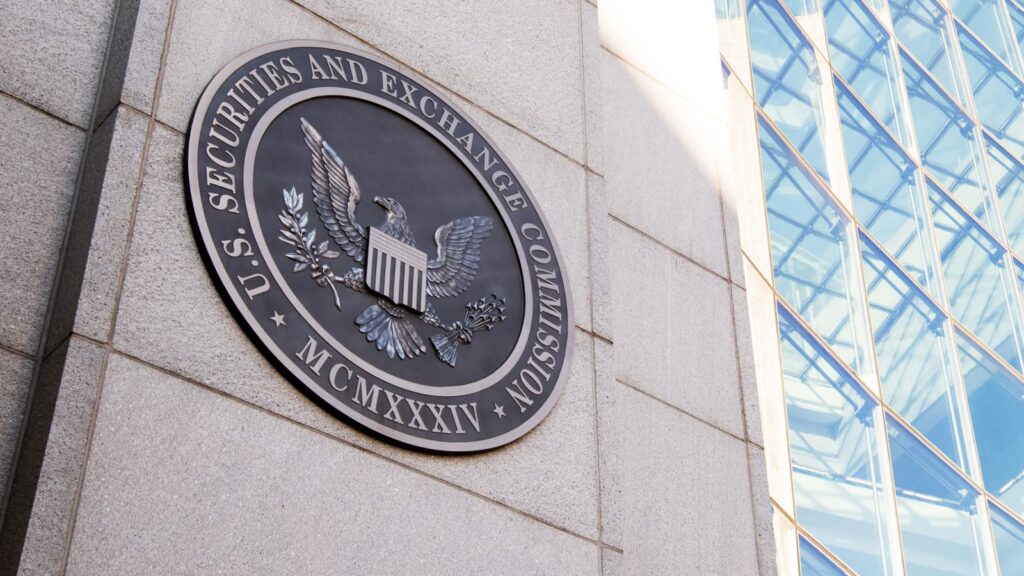Chinese authorities are intensifying their efforts to curb the use of cryptocurrencies, specifically targeting Tether, in foreign exchange trading, more than two years after imposing a comprehensive ban on cryptocurrencies.
The Supreme People’s Procuratorate (SPP), the highest legal prosecution agency in mainland China, along with the State Administration of Foreign Exchange (SAFE), jointly issued a warning on December 27th, cautioning the public against employing USDT as an intermediary for trading the Chinese yuan against other fiat currencies.
In their joint statement, the SPP and SAFE unequivocally stated that utilizing Tether as an intermediary for exchanging local and foreign currencies is illegal.
They called upon local authorities to enforce stricter measures against the use of the Tether stablecoin in cross-border foreign exchange transactions.
Furthermore, the authorities emphasized that all activities related to cryptocurrency exchange involving the yuan are illegal, including indirect involvement such as providing technical support or exchange services.
This crackdown follows a recent case involving Chinese citizen Zhao Dong, the founder of RenrenBit, an over-the-counter crypto trading desk.
READ MORE: 2024 Crypto Outlook: Rising Threats from AI-Powered Scams and BRC-20 Exploits
Zhao Dong was sentenced to seven years in prison and fined 2.3 million yuan ($322,000) for using United Arab Emirates dirhams to purchase USDT and subsequently reselling it in mainland China for yuan.
This latest development comes more than two years after the Chinese authorities initially imposed a sweeping ban on cryptocurrency activities within the country, encompassing trading and mining.
Since then, local agencies have been rigorously pursuing cases related to Tether transactions, with one individual sentenced to nine months in prison for purchasing 94,988 Chinese yuan ($13,067) worth of Tether in August 2023.
Despite the 2021 cryptocurrency ban, it appears that cryptocurrencies like Tether remained popular in China for some time.
In 2022, Beijing’s Chaoyang District People’s Court ruled against the use of stablecoins like USDT for salary payments, penalizing a firm that had illegally compensated an employee using USDT.
Remarkably, as of October 2022, China’s crypto market continued to rank among the world’s most robust, with mainland China reemerging as the second-largest Bitcoin mining hub.
This demonstrates the ongoing tension between regulatory authorities and the cryptocurrency industry within China.
In a recent development, a United States federal judge has handed down a ruling in favor of the Securities and Exchange Commission (SEC) in a case involving Terraform Labs and its former CEO, Do Kwon.
The court granted summary judgment in favor of the SEC, which had accused Terraform Labs and Kwon of offering and selling two unregistered securities, namely, LUNA, UST, and MIR.
District Court Judge Jed Rakoff issued his decision on December 28, stating that Terraform Labs and Kwon indeed offered and sold unregistered securities in the form of LUNA, UST, and MIR.
However, Judge Rakoff did grant summary judgment in favor of the defendants regarding the alleged unregistered offer and sale of security-based swaps.
The SEC had argued that Kwon and Terraform Labs offered and executed transactions in security-based swaps by creating and maintaining the Mirror Protocol, which allowed users to mint “mAssets.”
Nevertheless, the court rejected this claim, asserting that mAssets did not meet the statutory definition of a security-based swap.
M-Assets are blockchain assets that mirror real-world assets by reflecting on-chain exchange prices.
READ MORE: New York Times Files Copyright Infringement Lawsuit Against OpenAI Over AI Content Usage
The court referenced a prior statement made by Kwon, in which he encouraged LUNA holders to invest and expect profits solely from Terraform and himself.
This led the court to conclude that LUNA satisfied the Howey test, thus constituting a security.
Regarding the MIR token, the court similarly ruled in favor of the SEC, stating that the defendants could not dispute that MIR holders expected profits from a common enterprise based on Terraform’s efforts to develop and maintain the Mirror Protocol.
Despite these rulings, the court did not grant either side’s motion for summary judgment on the SEC’s fraud claims against Kwon, which alleged that he orchestrated a fraudulent cryptocurrency scheme resulting in a substantial market value loss of at least $40 billion in 2022.
The fraud claims will be the subject of a jury trial scheduled to commence in January, with jury selection set for January 24, 2024.
In response to the court’s decision, a spokesperson for Terraform Labs expressed disagreement and a commitment to vigorously defend against the SEC’s fraud claims in the upcoming trial.
They asserted that they do not believe the UST stablecoin or the other tokens in question should be classified as securities and that the SEC’s fraud allegations lack supporting evidence.
Vitalik Buterin, one of Ethereum’s founders, has called for a resurgence of the “cypherpunk” ideals that were originally envisioned for the blockchain when it was in its infancy.
In a blog post on December 28th, Buterin lamented the shift towards financialization that Ethereum underwent in 2017, and expressed a desire to see the return of core cypherpunk values to the platform.
Ethereum was initially conceived as a “public decentralized shared hard drive” that could harness the power of peer-to-peer messaging and decentralized file storage.
However, as the platform evolved, it veered away from its original vision.
Buterin now seeks to reinvigorate Ethereum with principles such as decentralization, open participation, censorship resistance, and credible neutrality.
He remains optimistic that non-financial applications can thrive on the blockchain.
Buterin pointed out that technologies like rollups, zero-knowledge proofs, account abstraction, and second-generation privacy solutions have gained wider acceptance.
These innovations could serve to reinforce the cypherpunk values he champions.
The term “cypherpunk” refers to individuals who use encryption to safeguard their privacy when accessing computer networks, particularly in the face of government scrutiny.
Buterin also encouraged the adoption of activities aligned with cypherpunk ideals, such as participating in polls without revealing one’s identity and implementing mechanisms like quadratic voting and cross-tribal consensus to facilitate self-governance within organizations.
READ MORE: Bitcoin Price Faces Seasonal Headwinds: BTC Drops to $42,200
He acknowledged that there are instances within the crypto ecosystem where these values are not upheld, citing highly centralized layers with no plans for change and nonfungible token ecosystems stored on centralized websites instead of decentralized platforms like IPFS as examples.
Resisting these pressures is challenging, according to Buterin, but he warned that failing to do so could lead to the crypto ecosystem losing its unique value and becoming a replica of the existing web2 ecosystem, albeit with additional inefficiencies and complexities.
Despite these challenges, Buterin praised the industry for finding solutions to some of its most significant issues.
He highlighted how decentralized exchanges have addressed security concerns associated with centralized exchanges, and he noted the contributions of projects like Cowswap, Flashbots Protect, and MEV Blocker in mitigating the impact of sandwich attacks on Ethereum users.
To further enhance Ethereum’s efficiency, Buterin proposed reducing the number of signatures required from validators to maintain the network’s operation, aiming to make the Ethereum proof-of-stake chain lighter and simpler.
This proposal reflects his ongoing commitment to improving the Ethereum ecosystem in line with its original cypherpunk ethos.
ARK Invest has taken the lead by filing its final Form S-1 amendment for its proposed Bitcoin exchange-traded fund (ETF), putting itself in contention for early approval.
The United States Securities and Exchange Commission (SEC) recently set a crucial deadline for ETF applicants to submit their final S-1 amendments by December 29, 2023, with the expectation of making initial decisions in January 2024.
During a meeting held on December 21, SEC officials met with representatives from seven firms, emphasizing the significance of meeting the deadline.
It was made clear that failure to do so would exclude applicants from the initial round of potential spot Bitcoin ETF approvals early next year.
On December 28, ARK Invest made a pivotal move by filing an amendment to the S-1 registration statement for its Ark 21Shares Bitcoin ETF.
Bloomberg ETF analyst Eric Balchunas highlighted that the amendment focused on authorized participants.
This came after ARK had already revised its application on December 19 to adjust cash creations and redemptions for shares in its fund, aligning with industry trends.
READ MORE: Chinese Authorities Bust $2.2 Billion Crypto Underground Banking Operation
Interestingly, other ETF issuers have been relatively quiet in terms of amended Bitcoin ETF filings, which has raised speculation.
Balchunas suggested that some firms might be waiting until the last minute to avoid revealing their amendments to competitors.
With more than a dozen companies vying for approval of a spot Bitcoin ETF, it is anticipated that additional amended S-1 filings will be submitted within the next 24 hours.
Nate Geraci, president of ETF Store, commented on the growing activity in anticipation of spot Bitcoin ETFs launching in January.
He noted the positive aspect of this saga, which is that it is compelling traditional finance (TradFi) investors to delve into the world of cryptocurrency and prompting crypto investors to familiarize themselves with ETFs.
This convergence, he dubbed “The Bridge,” underlines that crypto is here to stay, with the potential to reshape the financial landscape.
ARK Invest, led by Cathie Wood, a prominent institutional asset management firm, has made a significant move in its investment portfolio by liquidating its entire remaining holdings of the Grayscale Bitcoin Trust (GBTC), valued at $200 million.
Bloomberg ETF analyst Eric Balchunas brought this development to light.
From the proceeds of the GBTC sale, ARK Invest allocated approximately $100 million towards an investment in the Bitcoin Futures ETF called Bito.
Nonetheless, industry experts view this move as a temporary measure, with ARK Invest likely seeking a more liquid and diversified investment portfolio.
Consequently, ARK Invest has now become the second-largest holder of Bito, according to Eric Balchunas.
The process of divesting from GBTC began in October, coinciding with Bitcoin’s price reaching $34,000.
At that time, ARK Invest initiated the sale of 100,739 GBTC shares, valued at $2.5 million, from its ARK Next Generation Internet ETF (ARKW). Later, on December 19, the firm sold an additional 809,441 GBTC shares worth $27.9 million.
READ MORE: Bitcoin Price Faces Seasonal Headwinds: BTC Drops to $42,200
In addition to shedding GBTC, ARK Invest also offloaded 148,885 shares of Coinbase, a popular cryptocurrency exchange, amounting to $27.5 million, from its ARK Next Generation Internet ETF.
These actions by ARK Invest are significant, given the ongoing anticipation surrounding the approval of a spot Bitcoin ETF.
Notably, ETF analysts, including Eric Balchunas, have expressed a 99% probability of a spot Bitcoin ETF receiving approval before the deadline of January 10, 2024.
Cathie Wood, the CEO of ARK Invest and a notable advocate for Bitcoin, has been vocal about the likelihood of a spot Bitcoin ETF gaining approval.
During a recent interview, Wood acknowledged that the heightened expectations regarding the approval of spot Bitcoin ETFs could have a short-term impact on Bitcoin’s price.
However, she emphasized the promising long-term outlook for the cryptocurrency market.
Wood’s comments reflect the dynamic nature of the crypto industry and the significant role institutional players like ARK Invest play in shaping its future.
In the lead-up to the anticipated approval of a spot Bitcoin exchange-traded fund (ETF) in early January, the trading volumes of Bitcoin mining company Marathon Digital have surged, propelling it to the top of the charts among U.S. mid and large-cap stocks.
Over the past 24 hours, the publicly traded firm has witnessed an astonishing trading volume of over 105 million shares, surpassing giants like Tesla, Apple, and Amazon, as reported by Yahoo Finance market data.
Additionally, fellow Bitcoin miner Riot Platforms has emerged as the sixth most-traded stock on the charts, with more than 40 million shares exchanged in the last day.
This increase in trading activity on Bitcoin mining stocks coincides with a renewed push by mining companies to expand their operations, with an eye on the expected approval of the spot Bitcoin ETF in January and the Bitcoin halving scheduled for April.
Marathon Digital made headlines on December 19th when it unveiled plans to acquire two mining centers for a staggering $179 million.
This strategic move will augment its current mining capacity by 390 megawatts, supplementing its existing output of 584 megawatts.
Meanwhile, Riot Platforms had made an equally significant investment two weeks prior, acquiring an additional $291 million worth of Bitcoin mining rigs, resulting in its largest-ever increase in hash rate.
READ MORE: FTX Debtors Propose Settlement in Bankruptcy Case over Embed Acquisition
Despite Bitcoin’s impressive growth of more than 163% since the beginning of the year, the shares of Bitcoin mining companies have significantly outperformed the leading cryptocurrency.
Marathon Digital and Riot Platforms have witnessed astounding year-to-date gains of 767% and 452%, respectively, according to data from TradingView.
Notably, the largest publicly traded cryptocurrency exchange, Coinbase, has also experienced substantial gains, soaring by over 450% since the year began.
The year started with crypto-related stocks being popular targets for short trading, likely influenced by the memories of the FTX collapse and other high-profile meltdowns in 2022.
However, those who bet against the crypto sector may have underestimated its resilience, as more than $6 billion worth of crypto-related shorts have been liquidated so far this year.
The surging interest in Bitcoin mining stocks and the broader crypto market indicates a shifting sentiment, with investors increasingly bullish on the future of digital assets and the potential approval of a Bitcoin ETF in the near future.
Longtime market participant Matthew Hyland is confident that Bitcoin is poised for a bullish rally, and he outlined his predictions in a recent post on X (formerly Twitter).
Despite Bitcoin’s dip to $41,650 over the Christmas period, Hyland believes that the cryptocurrency is gearing up for significant price gains.
Hyland points to two key indicators, the Bollinger Bands and the Relative Strength Index (RSI), as signals for a short-term reversal in Bitcoin’s price.
He notes that the Daily Bollinger Bands are tightening, similar to the conditions that triggered previous price surges above $30,000 and $40,000.
Additionally, the Daily RSI is currently at a two-month low, and the 3-Day Moving Average Convergence Divergence (MACD) is on the verge of a crossover.
Bollinger Bands are a widely used volatility indicator that track Bitcoin’s price action and signal potential breakouts in volatility.
The narrowing of the daily-timeframe bands indicates that a new round of volatility may be on the horizon. This pattern has previously been observed in the lead-up to Bitcoin’s recovery above $30,000.
READ MORE: Grayscale’s Strategic Shift and CEO Resignation Spark Speculation Over Bitcoin ETF Approval
The RSI, a momentum oscillator, provides insight into whether BTC/USD is overbought or oversold at a given price.
With an RSI reading of 53, Bitcoin is well below the overbought threshold of 70 and even further from its recent peak of 76 in December. This suggests room for further upside potential.
Longer timeframes also support the bullish outlook, as veteran trader Peter Brandt noted last week.
Hyland adds that the Daily RSI is currently at its lowest levels in over two months, a period when Bitcoin was trading below $27,000.
However, one potential obstacle to Bitcoin’s bullish trend is the Moving Average Convergence Divergence (MACD) on three-day timeframes, which is showing signs of a bearish trend flip.
Hyland acknowledges this, but he highlights that there are several days left for the MACD signal to potentially negate itself based on price action.
He also points out that the MACD has been accurate in predicting both lower and higher prices throughout the year.
In conclusion, Matthew Hyland’s analysis suggests that Bitcoin is on the verge of a significant bullish move, with multiple indicators aligning in favor of a price surge.
While the MACD presents a potential bearish concern, it remains to be seen how Bitcoin’s price action will unfold in the coming days.
The artificial intelligence (AI) industry faces yet another copyright infringement lawsuit, as the New York Times (NYT), a renowned legacy media outlet, has taken legal action against OpenAI, the creator of ChatGPT.
On December 27th, the NYT initiated the lawsuit, asserting that OpenAI unlawfully utilized its content to train its AI chatbots, thereby impeding the NYT’s ability to carry out its journalistic work.
The lawsuit draws from both the United States Constitution and the Copyright Act to protect the NYT’s original journalism. It also highlights Microsoft’s Bing AI, alleging that it generates verbatim excerpts from NYT content.
The lawsuit contends that OpenAI’s tools have undermined the NYT’s relationship with its readers, causing financial losses in subscription, licensing, advertising, and affiliate revenue.
The NYT’s case mirrors concerns raised by other media companies.
In November, the News Media Alliance made similar claims, asserting that AI chatbots were illegally reproducing copyrighted news content and diverting revenue, data, and users from news publications.
Cecilia Ziniti, an intellectual property (IP) and AI lawyer, considers this lawsuit to be one of the most compelling cases of generative AI committing copyright infringement.
A central argument in the case is that the NYT’s website, “www.nytimes.com,” is among the most frequently used proprietary sources by AI, following only Wikipedia and a U.S. patent database.
The lawsuit exemplifies minor distinctions, consisting of just a few words, between original NYT content and the output from GPT-4.
READ MORE: Bitcoin Hash Rate Hits All-Time High on Christmas Day
The lawsuit reveals that the NYT attempted to address its intellectual property concerns with Microsoft and OpenAI in April 2023 in pursuit of an amicable resolution, but these efforts proved unsuccessful.
Ziniti, a longtime subscriber to NYT and NYT Food archives, noted that if ChatGPT provided her with articles and full recipes for free, she might not continue to pay for NYT subscriptions.
She suggests that this case could be a pivotal moment for both AI and copyright law.
Within the OpenAI developer forum, a thread discussing the lawsuit elicited mixed reactions.
Some users hope that the NYT’s claims do not succeed, while others find the situation intriguing and believe it is worth pursuing for the Times.
This lawsuit follows the Author’s Guild’s class-action lawsuit against OpenAI in September, alleging the misuse of copyrighted material in training AI models.
OpenAI has committed to covering legal costs for business-tier ChatGPT users embroiled in copyright infringement disputes.
In the broader landscape, lawsuits related to copyright infringement in AI extend beyond OpenAI, with Universal Music Group suing Anthropic AI over the misuse of copyrighted musical compositions and artists pursuing legal action against Midjourney, DeviantArt, and Stability AI for the use of art in training image-generating AI models.
These cases underscore the complex legal challenges posed by AI’s interaction with copyrighted content.
Chinese authorities have recently cracked down on a substantial underground banking operation valued at $2.2 billion.
This illicit operation had been utilizing foreign “virtual currency trading platforms” to enable its clients to circumvent China’s stringent capital controls.
The revelation of this unlawful scheme emerged on December 24 through Chinese social media channels, shedding light on the actions of Chinese foreign exchange police.
According to Xu Xiao, an inspector from the Qingdao Branch of the State Administration of Foreign Exchange, the modus operandi of these underground banks involved the acquisition of virtual currencies, which were subsequently sold through overseas trading platforms to acquire the necessary foreign currency.
This process effectively facilitated the conversion between yuan and foreign currencies, constituting illegal foreign exchange trading.
During the on-site investigation, authorities seized cryptocurrencies with a total value of $28,000 (equivalent to 200,000 Chinese yuan). Among the confiscated assets were Tether and Litecoin.
Astonishingly, this covert operation had managed to funnel over $2.2 billion (approximately 15.8 billion Chinese yuan) through a network spanning a thousand bank accounts across 17 provinces and municipalities.
China’s legal framework imposes strict limits on the exchange of foreign currencies by Chinese nationals, capping it at $50,000 annually unless a permit is obtained.
Attempting to evade these restrictions is classified as money laundering under the purview of the state.
Some observers argue that these capital controls are the underlying motive behind China’s adversarial stance toward cryptocurrencies.
READ MORE: FTX Debtors Propose Settlement in Bankruptcy Case over Embed Acquisition
While the Chinese government has cited concerns about crypto’s use in money laundering and criminal activities to justify its ban, many suspect that the primary goal is to enforce capital controls more rigorously.
In 2016, China initiated stringent foreign exchange regulations, mandating that banks, companies, and individuals adhere to a “closed” capital account policy.
This policy effectively restricts the free movement of money into or out of the country, subject to tightly regulated state rules, in a bid to thwart capital flight.
Subsequently, in 2017, China banned domestic cryptocurrency exchanges, and in 2021, it enacted an outright ban on cryptocurrencies that remains in force today.
Additionally, reports have emerged suggesting that Binance employees and volunteers may have assisted Chinese customers in evading the exchange’s Know Your Customer (KYC) procedures.
On December 23, the South China Morning Post (SCMP) reported instances of Chinese users accessing Binance by falsely indicating their location as Taiwan, further highlighting the challenges faced by Chinese authorities in controlling cryptocurrency-related activities within their borders.
Blockchain security experts predict that in 2024, crypto projects and investors will face a range of significant threats, including AI-powered phishing scams, BRC-20 exploits, and new vulnerabilities in smart contracts.
Despite a decrease in scam and hack-related losses from $4 billion in 2022 to $1.7 billion in 2023, Jesse Leclere, a blockchain analyst at CertiK, warns that scams are becoming more sophisticated.
Users are urged to stay vigilant against well-executed exploits.
Leclere emphasizes that phishing attacks, evolving in sophistication, will target not only individual users but also corporate systems, using tailored social engineering tactics for the crypto context.
The December 14 Ledger Connect exploit serves as a prime example of an advanced attack.
Generative AI is expected to play a crucial role in making phishing scams more nefarious, allowing hackers to automate operations and create convincing fake calls, videos, and messages to deceive potential victims.
Jenny Peng, a research analyst from 0xScope, also warns that AI could contribute to generating realistic “deep fakes” to trick crypto users.
Peng predicts that hackers will pay extra attention to the burgeoning BRC-20 ecosystem in 2024 due to a relative lack of security developments.
She points out the double-spend exploit that hit the BRC-20 UniSat wallet in early 2023 as evidence that the ecosystem needs to quickly improve its security infrastructure.
READ MORE: Spot Bitcoin ETF Approval Expected to Transform Crypto ETF Market
Cross-chain bridges, a persistent concern for the industry, will continue to be problematic in 2024.
As the industry adopts cross-chain solutions for greater interoperability, these protocols become attractive targets for attackers.
Complex interactions between different protocols and chains can lead to vulnerabilities.
Notably, some of the largest crypto hacks have resulted from bridge exploits, including the infamous $650 million Ronin bridge hack.
Phil Larratt, director of investigations at Chainalysis, warns that bad actors will become more adept at avoiding detection in 2024. Illicit actors are expected to adopt more sophisticated tactics and techniques, especially as traditional organized criminals and financial crime actors increasingly embrace crypto.
To combat this trend, Larratt suggests the need for more intensive law enforcement investigations, increased training and knowledge sharing among law enforcement organizations, advanced fraud protection programs, and continued public-private sector partnerships.
As crypto evolves, so too must the strategies to counter emerging threats.











